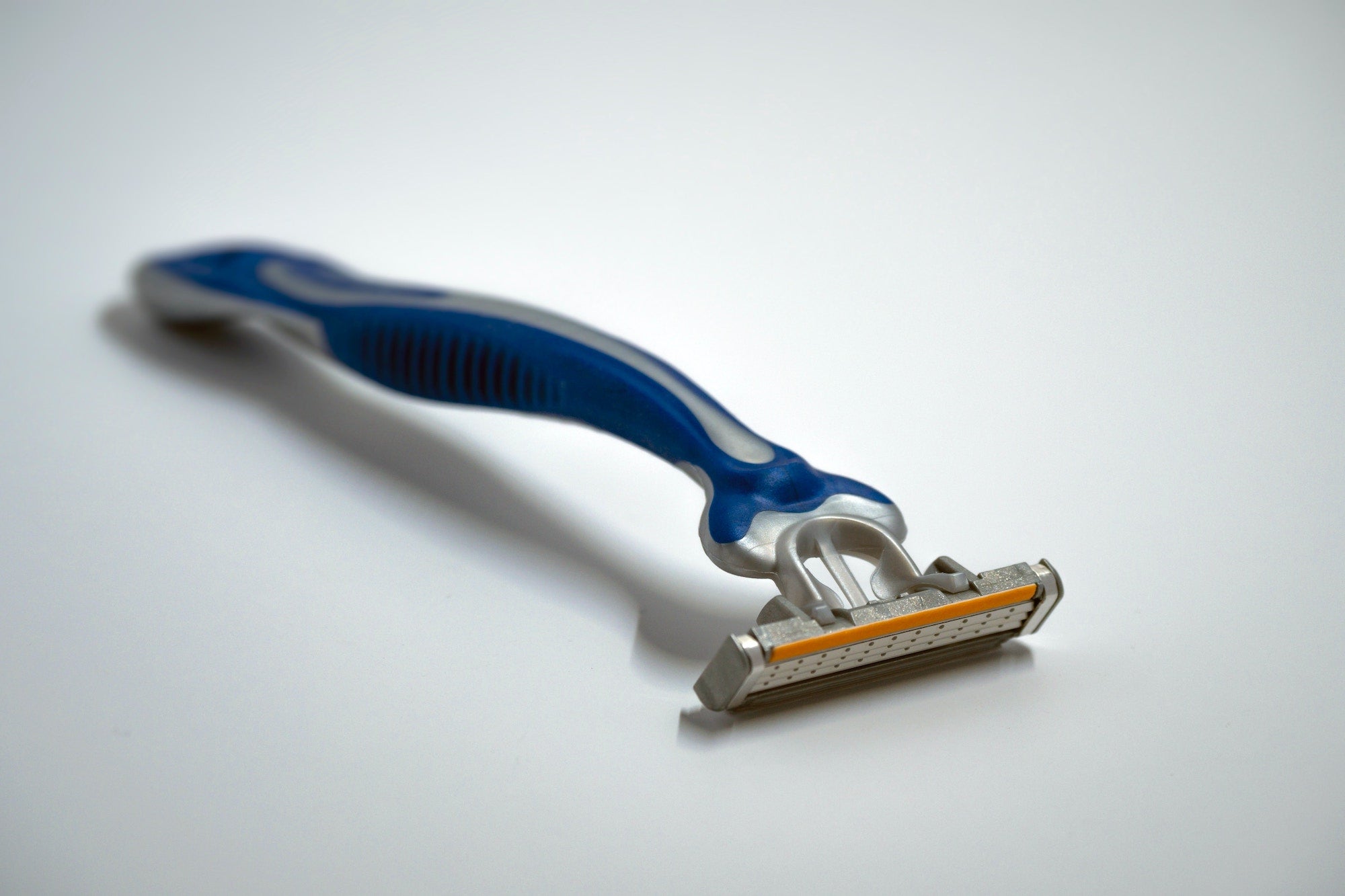Have you ever noticed red streaks or pimple-like bumps after shaving? If you have, you might be dealing with razor burn, a common sign of irritation after shaving.
Razor Burn
Razor burn refers to red irritation rashes that occur after shaving. It is common around the bikini area but can happen on any part of the body you shave, caused by things such as aggressive shaving, using a dull razor, shaving without water or cream, and sensitive skin. You may notice that your skin feels itchy, tender, and is stinging or burning. As the hair grows back you might also notice razor bumps or ingrown hairs, which almost look like little pimples. Ingrown hairs happen when the hair grows and curls under the skin instead of rising through it. Sometimes dead skin can clog where you shaved, blocking the hair from growing back straight up and forcing it at an angle instead. Wherever that hair is, a bump will form.
If you experience any of this irritation, avoid shaving the area until it clears. Cool water and soothing moisturizers can also help calm down discomfort in the meantime. These can include aloe vera, vitamin e oil, or unscented lotion – scented ones have perfumes that may smell great but could irritate your skin further, especially if it's already sensitive! Moisturizers with lots of artificial ingredients or chemicals can do the same thing. In cases of extreme discomfort you could also use a medicated, over the counter cream like hydrocortisone, but it’s always important to speak with a doctor, ideally a dermatologist (skin doctor!), first.
There are also things you can do before and as you shave to decrease the chance of getting razor burn. Here are some recommendations:
Quick sidenote:If you suffer from shaving nicks (teeny tiny cuts), the tips below may also help with that!
- Avoid dry shaving: This means to make sure you’re using warm water and shaving cream as you shave. Even lathered soap or conditioner will do! Water and products create a protected and lubricated surface (A.K.A. - a smooth barrier between the razor and your skin) so the razor isn’t as harsh and doesn’t scrape you.
- Make sure to use an unrusted and fresh razor: Brown or red spots on your razor blades may be a sign of rust, which is a dead giveaway that you need a new razor. Shaving with a rusty or dull razor increases your chance of cuts or infection. Using a razor blocked with product or hair can do the same thing, so make sure you keep rinsing your razor under water as you shave to clear out anything that’s stuck.
- Don’t use a dull razor: Sometimes the stuck hair or product can clog your razor, but if you rinse it and still have trouble shaving, your razor might be too dull. If you have to press down super hard when you shave in order to get hair off, shave but barely any hair is removed, or have to go over the same areas multiple times to remove hair, try using a new, sharp razor. Using a dull one can pull the skin too hard and cause cuts.
- Try shaving in the direction of hair growth: This is also called shaving with the grain instead of against it. Take a look at where you want to shave and try to identify what direction your hair grows. A quick trick is to take your finger and run it back and forth along where you want to shave. Whichever direction your finger pushes your hair up, that is in the opposite direction of growth (against the grain). Whichever lays your hair down flat is following the direction of hair growth (with the grain). Shave in this direction! Going opposite might give you a closer shave (cut the hair shorter), but going with the grain prevents irritating tugs. You might find that shaving against the grain isn’t irritating on places with thicker skin like your legs, but causes razor burn on more sensitive places like the bikini area.
- Exfoliate often: Exfoliation is a way of cleansing the top layer of your skin to remove dead skin cells, often with grainy scrubs that physically rub them away. Gentle exfoliation (keep a light touch - don’t scrub too hard!) before shaving can help remove anything that will clog hair follicles and cause irritation bumps. It’s recommended that you exfoliate only 2-3 times per week, as any more can leave your skin too raw and sensitive.
A little tip: If you don’t already own an exfoliating scrub, you can make one at home by mixing granulated sugar or salt with any oil you have. Keep in mind that scrubs like this are only meant for your body and can be too harsh for your face.




Leave a comment
All comments are moderated before being published.
This site is protected by hCaptcha and the hCaptcha Privacy Policy and Terms of Service apply.